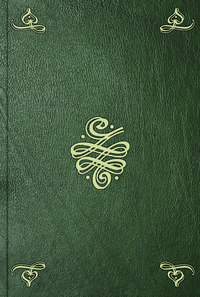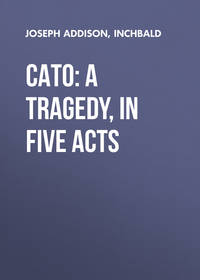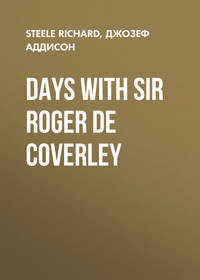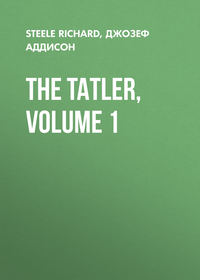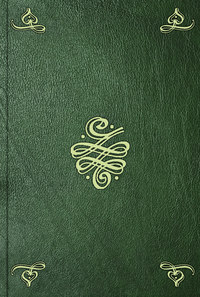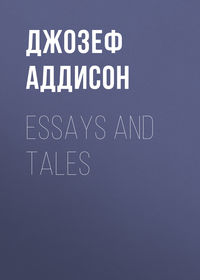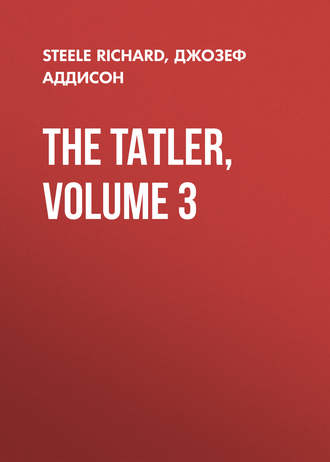 полная версия
полная версияThe Tatler, Volume 3
127
See No. 145. Part of Westminster Hall was devoted to shopkeepers' stalls, where toys, books, &c., could be brought. Tom Brown ("Amusements," &c. 1700) says: "On your left hand you hear a nimble-tongued painted sempstress with her charming treble invite you to buy some of her knick-knacks, and on your right a deep-mouthed crier, commanding impossibilities, viz., silence to be kept among women and lawyers."
128
The trial of Dr. Sacheverell, which extended from February 27 to March 23, 1710. A Tory pamphlet, "A Letter to the Rev. Dr. Henry Sacheverell, by Isaac Bickerstaff, Esq.," 1709, appeared in January 1710. Another pamphlet was called "The Character of Don Sacheverello, Knight of the Firebrand, in a Letter to Isaac Bickerstaff, Esq., Censor of Great Britain."
129
See No. 138.
130
See No. 136.
131
See No. 129.
132
The whole attention of the town in March 1710 was devoted to the Sacheverell trial. See Nos. 140, 142, 157.
133
See No. 145.
134
See No. 138.
135
See No. .
136
The foot of London Bridge. There was a tavern, famous in the seventeenth century, called "The Bear at the Bridge-foot," below London Bridge.
137
See No. 137.
138
See No. 137. In No. 140 there was the following advertisement: "At the request of all the ladies of quality, who are at present engaged in politics, the benefit night for Cavalier Nicolini is put off to Tuesday the 7th instant."
139
Cf. "Wentworth Papers," p. 113. "Sacheverell will make all the Ladys good huswis, they goe att seven every mornin'," says Lady Wentworth.
140
The spectators brought their lunch with them.
141
A coffee-house in Fleet Street, at the east corner of Inner Temple Lane.
142
Charles Mather, the toyman (see Nos. , 113).
143
Goldsmiths' receipts for coin lodged with them as bankers were sometimes transferred from hand to hand, but this was always limited to a few merchants.
144
Deceived.
145
A dragon is a small malacca cane, so called from its blood-red colour. It comes from Penang, Singapore, and other islands in the Straits of Malacca. A jambee, on the contrary, is a knotty bamboo of a pale brown hue. As an article of commerce it is now extinct. The "clouded cane" of Sir Plume was a large malacca artificially coloured (Dobson).
146
Charles Mather.
147
A punch nag is a horse well set and well knit, having a short back and thin shoulders, with a broad neck, and well lined with flesh ("Farrier's Dictionary").
148
The puppet-show man.
149
"The learned and ingenious Mr. Joshua Barnes has lately writ an eulogium (after the manner of learned men to each other) upon me; and after having made me his compliments in the behalf of his beloved Homer, and thanked me for the justice I have done him, in the 'Table of Fame,' has desired me to recommend the following advertisement: 'Whereas Mr. Joshua Barnes, B.D., her Majesty's Greek professor in the University of Cambridge, hath some time since published proposals for printing a new and accurate edition of all Homer's "Works," enlarged, corrected, and amended, by the help of ancient MSS. the best editions, scholiographers, &c.: These are to certify, that the "Iliad" and "Odyssey" are now both actually printed off, only a small part of the hymns, other poems, and fragments remaining, with the indexes, Life of Homer, and Prolegomena, which are carried on with all possible expedition. All gentlemen therefore, scholars and masters of great schools, that are willing to reap the benefit of subscription, being ten shillings down, and on the delivery of the two volumes in sheets twenty shillings more, are desired to make their first payment to the said Mr. Barnes, now lodging at the printing house at Cambridge, before the end of March; after which time no more single subscriptions to be admitted'" (Tatler, orig. folio, No. 139). Joshua Barnes (1654-1712), Greek scholar and antiquary, was educated at Christ's Hospital and Emanuel College, Cambridge. He was appointed professor of Greek at Cambridge in 1695. The expenses incurred in the production of his "Homer" involved him in considerable difficulties. Bentley paid a doubtful compliment to Barnes when he said that Barnes knew as much Greek as a Greek cobbler. See the Spectator, No. .
150
Mr. Joshua Barnes' new and accurate edition of all Homer's Works, &c. (Steele).
151
Horace, "Ars Poet." 359 ("Quandoque bonus," &c.).
152
Cf. Steele's "Lover," No. 13: "I might have been a king at questions and commands." This game is mentioned several times in the Spectator.
153
General Cornelius Wood, son of the Rev. Seth Wood, was born in 1636. He served for four years as a private soldier, before he was advanced to be a sub-brigadier; after which his rise was rapid, owing entirely to his signal valour, his strict justice, and extensive humanity. The Prince of Orange, on his accession to the throne, gave him a troop of horse, in the regiment commanded by George Lord Huet; he was made a colonel of horse in 1693; and a brigadier-general in 1702. His conduct and conversation in Ireland rendered him very acceptable to Marshal Schomberg; his valour was conspicuous at the Battle of Blenheim, after which the Duke of Marlborough declared him a major-general; it was no less signally manifested at Ramillies in 1706; the year following he was made a lieutenant-general of horse, in which post he arrived to be the eldest. In 1708, he was Governor of Ghent, and honoured by the burghers, in testimony of their singular satisfaction, with a large piece of plate, which he left as a legacy to the Duke of Ormond, to evince his gratitude for services received, and his esteem for that nobleman's illustrious character. In 1709, he gathered fresh laurels in the bloody field of Tanieres, and next year was again appointed Governor of Ghent; but in his march to that garrison, an unruly horse on which he rode, reared on end, and fell backwards upon him; his collar-bone was broken, and his stomach so bruised by this accident, that he never was well after. He languished about two years, and died at the Gravel-pits near Kensington, on the 17th of May 1712, in the 75th year of his age. He never married (Nichols). Prior, in his poem on the Battle of Blenheim, says:
"Let generous Sylvius stand for honest Wood."
154
"Osyris"; see No. 143.
155
See No. 141.
156
See No. 50.
157
See No. .
158
See No. 139.
159
Perhaps Alexander Bayne; see No. 84.
160
"Iliad," xiv. 157.
161
Lotus is the name of a native genus akin to the trefoil and clovers. It is best known as the supposed opium-like food of a people on the shores of the Mediterranean, visited by Ulysses,—Tennyson's "mild-eyed melancholy lotos-eaters," living in a land where all things always seemed the same.
162
The preceding portion of this paper was by Addison (Tickell)
163
This sale was advertised in No. 145.
164
Butler, speaking of Talgol ("Hudibras," Part I. canto ii. 305), says:
"He many a boar and huge dun-cowDid, like another Guy, o'erthrow,But Guy, with him in fight compared,Had like the boar or dun-cow fared."165
Samuel Daniel's "History" was published in 1613.
166
Bacon, Essay viii., "Of marriage and single life": "It is one of the best bonds, both of chastity and obedience, in the wife, if she thinks her husband wise, which she will never do if she finds him jealous."
167
"Epist.," vi. 4, 7, 5.
168
"Paradise Lost," viii. 39.
169
Francesca Margarita de l'Epine, a native of Tuscany. This celebrated singer performed in many of the earlier Italian operas represented in England. She and Mrs. Tofts were rivals for the public favour, and it seems they divided pretty equally the applause of the town. She sung on the stage, at public entertainments, in concerts at York Buildings and Stationers' Hall, and once in the hall of the Middle Temple, in a musical performance at the Christmas revels of that society. One Greber, a German musician, who studied some few years in Italy, brought this Italian with him to England, whence she was known by the name of Greber's Peg. It is said that she had afterwards a criminal connection with Daniel Earl of Nottingham. In a shrewd epigram written by Lord Halifax, she is styled "The Tawny Tuscan," and he is called "Tall Nottingham." Margarita continued a singer till about the year 1718, when, having, as Downes relates, scraped together above ten thousand guineas, she retired, and was afterwards married to Dr. Pepusch. The epithet "tawny" was very characteristic of her, for she was remarkably swarthy, and in general so destitute of personal charms, that her husband seldom called her by any other name than Hecate, to which she answered very readily. She died about 1740. See Sir J. Hawkin's "History of Music," vol. v. p. 153 (Nichols).—The statement that she had an improper connection with the Earl of Nottingham appears to rest solely on statements in party poems of the time.
170
Ladies wore "commodes" as head-dresses, sometimes backed by dark-coloured ribbons. The prevailing fashion about 1712 was cherry colour; see Spectator, No. .
171
In a song in D'Urfey's "Wit and Mirth"—"The Young Maid's Portion"—the lady speaks of her laced shoes of Spanish leather. Malcolm says that Spanish leather shoes laced with gold were common about this time (Planché's "Cyclopædia of Costume").
172
This paper, though not included in Addison's Works, may, as Nichols suggested, be his. Two slight corrections were made in the following number in the folio issue.
173
See No. , with reference to the long-continued mourning, on the decease of the Queen's husband, George Prince of Denmark, who died in October 1708. Lewis Duke of Bourbon, eldest son to the Dauphin of France, died on March 3, about three weeks before the date of this paper. A month before, on February 2, 1709-10, in consequence of a petition presented by the mercers, &c., complaining of their sufferings from the length and frequency of public mournings, leave was given to bring in a Bill for ascertaining and limiting the time of them.
174
The furbelow was a puckered flounce ornamenting the dress. D'Urfey wrote a play, "The Old Mode and the New, or Country Miss with her Furbelow."
175
Introduced from France at the Restoration.
176
Gloves with silver fringe round the wrists. A Fringe-Glove Club is mentioned in No. 30 of the Spectator.
177
See No. 95.
178
See No. .
179
Themistocles.
180
Cf. "1 Henry IV." act i. sc. 2, where Prince Hal says to Falstaff, "Farewell, thou latter spring!"
181
A love of youthful pleasure. Cf. "Henry VIII." act i. sc. 3,
"Well said, Lord Sands,Your colt's tooth is not cast yet."182
See No. 150
183
1 Epist. xviii. 31.
184
1 Od. v. 5.
185
See No. 157.
186
"Hath placed" (folio).
187
"Pale shadows" (folio).
188
See No. 133.
189
"Purify the soul from ignorance and vice" (folio).
190
The Great or Platonic Year is the time in which the fixed stars make their revolution. See Cicero, "De Natura Deorum," ii. 20.
191
The original of the Political Upholsterer of Nos. 155, 160 and 178 is said to have been an Edward Arne, of Covent Garden. It is clear that he cannot—as some have said—be the same person as the Arne at whose house the Indian kings lodged (see No. 171). Steele was attacked in the Examiner (vol. i. No. 11, vol. iv. No. 40) for the liberties here taken by Addison.
192
See No. 152.
193
Fénelon's "Télémaque."
194
This paper is not included in Tickell's edition of Addison's Works; but Steele ascribes it to Addison in his Dedication of "The Drummer" to Congreve.
195
See No. 153.
196
The trial of Dr. Sacheverell.
197
See Nos. and 160.
198
See Nos. , 71, 167.
199
The original of Tom Folio is supposed to be Thomas Rawlinson, a great book-collector, who lived in Gray's Inn, and afterwards in London House, Aldersgate Street, where he died, August 6, 1725, aged 44. His library and MSS. were sold between 1722 and 1734.
200
No. 154.
201
Satire iv.: "Les folies humaines."
202
No. 149.
203
"Epist." xiv, 1-4.
204
See No. 155.
205
The preceding portion of this paper is printed in Tickell's edition of Addison's Works.
206
See No. 157.
207
See No. 158.
208
See No. 101.
209
Bernard Lintot (1675-1736) was Jacob Tonson's principal rival in the publishing trade in the time of Queen Anne and George I.
210
The author of a curious pamphlet, "The Critical Specimen," 1711, said he was much divided in his opinion, whether to prefer the every way excellent Mr. Jacob Tonson, junior, or Mr. Bernard Lintot to be his bookseller, for the latter of whom he had had a particular consideration since he received this eulogium from his honoured friend Isaac Bickerstaff, Esq.—This pamphlet purports to be a specimen of a proposed Life of Rinaldo Furioso, Critic of the Woful Countenance,—i.e., John Dennis. It contains remarks upon the two good lines he wrote (Spectator, No. ) upon the difficulty of distinguishing his comedies from his tragedies, &c. &c. There is, too, an allusion to the Tatlers and Spectators in the notice that the virtues of the critic are to be printed in a very small neat Elzevir character, and his extravagances in a noble large letter on royal paper.
211
Cebes, of Thebes, was a disciple of Philolaus and Socrates. His Πιναξ is an account of a table on which human life, with all its temptations and dangers, is represented symbolically.
212
The Lake of Geneva.
213
See No. 85.
214
See Nos. , .
215
See Nos. , 143.
216
See Nos. , , .
217
See No. 158.
218
See No. 61.
219
See Nos. , , , 56, &c.
220
See Nos. , 155.
221
See No. .
222
See Nos. 108, 111, 135.
223
See Nos. , 141.
224
See Nos. , , , , , .
225
See Nos. , 115.
226
See No. 148.
227
See No. .
228
See No. 116.
229
See Nos. 96, 110.
230
See No. .
231
See No. 88.
232
See No. 153.
233
See Nos. 62, 127.
234
Perhaps Henry Cromwell. See Nos. , , 165, and Mrs. Elizabeth Thomas' "Pylades and Corinna," i. 194.
235
This idea was carried out in 1725, when Charles Lillie published, by Steele's permission, two volumes of "Original and genuine Letters sent to the Tatler and Spectator, during the time those works were publishing. None of which have been before printed." See No. 110.
236
See Nos. 117, 186, Advertisements.
237
See No. 151.
238
See No. 75.
239
It would hardly be possible for a man of Bickerstaff's age to acquire perfection in fencing after only a few months' practice. See No. 173: "I first began to learn to push this last winter."
240
Perhaps Henry Cromwell; see Nos. , , 163.
241
"I have been informed by a relation of hers, that when Mrs. Mary Astell has accidentally seen needless visitors coming, whom she knew to be incapable of discoursing upon any useful subject, she would look out of the window, and jestingly tell them (as Cato did Nasica), 'Mrs. Astell is not at home'; and in good earnest keep them out, not suffering such triflers to make inroads upon her more serious hours" (Ballard's "Memoirs of British Learned Ladies," 1775, p. 309). For Swift's attacks on Mary Astell, see Nos. , 63.
242
"Monter une perruque" is a French barber's phrase.
243
See Nos. , . Duvillier or Devillier was a hairdresser.
244
May Day. In the Spectator (No. ) Budgell says: "It is likewise on the first day of this month that we see the ruddy milkmaid exerting herself in a most sprightly manner under a pyramid of silver tankards, and like the virgin Tarpeia, oppressed by the costly ornaments which her benefactors lay upon her." Similarly, Misson ("Travels in England," p. 307) says: "On the first of May, and the five or six days following, all the pretty young country girls that serve the town with milk, dress themselves up very neatly, and borrow abundance of silver plate, whereof they make a pyramid, which they adorn with ribands and flowers, and carry upon their heads, instead of their common milkpails. In this equipage, accompanied by some of their fellow milkmaids, and a bagpipe and fiddle, they go from door to door, dancing before the houses of their customers."
245
"There is a Pastoral Masque to be performed on the 27th inst., in York Buildings, for the benefit of Mr. Clayton, and composed by him. This gentleman is the person who introduced the Italian opera into Great Britain, and hopes he has pretensions to the favour of all lovers of music, who can get over the prejudice of his being their countryman" (Tatler, original folio, No. 163).
Thomas Clayton, in association with Haym and Dieuport, began a series of operatic performances at Drury Lane Theatre in 1705, commencing with "Arsinoe," which was a success. In 1707 he produced a setting of Addison's "Rosamond," but it was played only three times. The opera performances were continued until 1711, after which Clayton gave concerts in York Buildings (see Spectator, No. 258). He died about 1730.
246
In the Strand. In 1713 Steele started a scheme for "a noble entertainment for persons of refined taste," in York Buildings.
247
At Charing Cross, with a back door into Spring Gardens.
248
See Nos. 153, 157, 168.
249
In the Daily Courant for Aug. 18, 1710, there was advertised as just published a pamphlet called "A Good Husband for Five Shillings; or, Esquire Bickerstaff's Lottery for the London Ladies. Wherein those that want bedfellows, in an honest way, will have a fair chance to be well fitted." It was complained that husbands were scarce through the war. The title exhausts all that is of interest in the pamphlet, with the exception of the frontispiece, which represents a room in which a lottery is being drawn, with two wheels of fortune, &c.
250
Nichols notes that a correction in this number, intimated in the following paper, was actually made in a copy before him, and concluded that there was sometimes more than one impression of the original folio issue. This was certainly the case. There is a set of the Tatlers in folio in the British Museum (press-mark 628 m 13) in which many of the numbers are set up somewhat differently from the ordinary issue (Nos. 4, 28, 29, 30, &c.). Sometimes there is a line more or less in a column; sometimes slightly different type is used in one or two advertisements.
251
See Nos. , 71, 157. On the 25th of April 1710, there was given for Betterton's benefit, "The Maid's Tragedy" of Beaumont and Fletcher, in which he himself performed his celebrated part of Melantius. This, however, was the last time he was to appear on the stage, for, having been suddenly seized with the gout, and being impatient at the thought of disappointing his friends, he made use of outward applications to reduce the swellings of his feet, which enabled him to walk on the stage, though obliged to have his foot in a slipper. But the fomentations he had used occasioning a revulsion of the gouty humour to the nobler parts, threw the distemper up into his head, and terminated his life on the 28th of April. On the 2nd of May his body was interred with much ceremony in the cloister of Westminster.—"This day is published, 'The Life of Mr. Thomas Betterton'" (Postboy, Sept. 16 to 19, 1710). This book, attributed to Gildon, is dedicated to Richard Steele, Esq. "I have chosen," says the author, "to address this discourse to you, because the Art of which it treats is of your familiar acquaintance, and the graces of action and utterance come naturally under the consideration of a dramatic writer."
252
Cicero.
253
"Macbeth," act v. sc. 5, quoted inaccurately by Steele.
254
Betterton married, in 1662, Maria Saunderson, an actress who seems to have been as good as she was clever. She lost her reason after the death of her husband, but recovered it before her death at the end of 1711. By her will she bequeathed to Mrs. Bracegirdle, Mrs. Barry, Mr. Doggett, Mr. Wilks, and Mr. Dent, twenty shillings a piece for rings; and her husband's picture to Mrs. Anne Stevenson, whom she appointed her residuary legatee.
255
Possibly Lady Elizabeth Hastings (see Nos. 42, 49), or perhaps Queen Anne, though it is not likely that she consulted Steele by letter on the subject. The Queen gave Mrs. Betterton a pension on the death of her husband, "but," says Cibber, "she lived not to receive more than the first half year of it."




